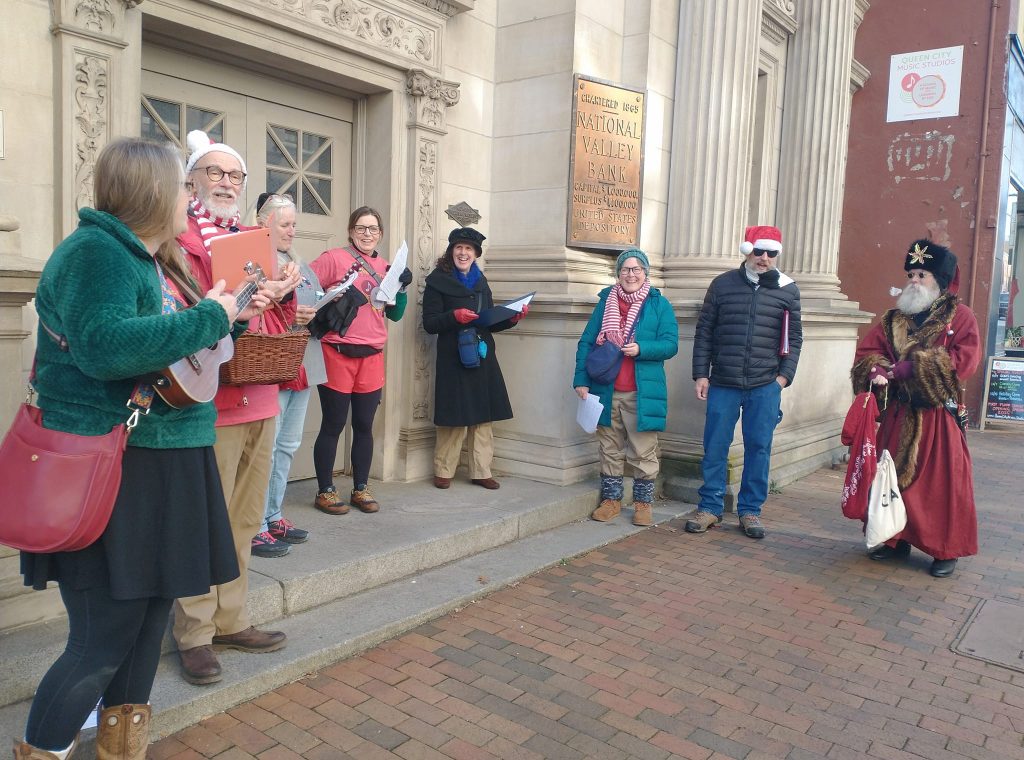Books, TV, Life, movies
2024 in Review
Happy new year!
I’m still considering this to be a semi-holiday before I plunge back into my regular routine (or my new, improved routine) next week, but it’s a good time for a year in review and a look at what’s ahead.
The big thing for 2024 was my cross-country move. That was a major change of scenery and lifestyle, and it really disrupted things for a while. As a result, I didn’t get as much written as usual, and I had the fewest books read of any year since I’ve been tracking.
It was kind of a reading slump year, probably for a lot of reasons. I know I didn’t read a lot during the prep/packing/moving/unpacking phase. I also didn’t have a lot of work-related reading. I wasn’t doing serious book research, so I didn’t have any reading that fit into my working time. Usually that accounts for a lot of books every year. I think I’ve been getting out a lot more, too. During the fall, I was out exploring most Saturdays, time when I might have been reading. In the summer, there were concerts in the park in the evenings.
But, if I’m being honest with myself, I wasn’t really prioritizing reading time. One issue with not having a dedicated office is that I have the computer right in front of me all the time, and it’s easy to fall into the habit of surfing the Internet or doing online puzzles and not pick up a book. One of my intentions for the new year is to be more deliberate about how I use my time. It doesn’t help that now I’m getting my newspaper online. When I get a house with an office, I may see about getting a larger tablet to use for things like newspaper reading so I can keep the computer in the office — and I won’t set up the tablet to access any of my social media accounts. I have a tablet, but it’s a small one the size of a book, which isn’t great for reading newspapers.
I think my favorite find of the year was the Seven Kennings books (first book is A Plague of Giants) by Kevin Hearne — a really different approach to epic fantasy with a very fun narrative style. I read those early in the year, before the move, so I was surprised to check my records and see that I read them in 2024. It seems like so long ago.
I didn’t really watch TV in 2024 other than on streaming, and there I was mostly catching up on older things I missed. The transition to the eastern time zone has messed me up for network TV because everything’s on so late. I enjoyed the Star Trek series Lower Decks and Strange New Worlds, and I’m loving the Star Wars Skeleton Crew series. I’ve been rewatching The Office. I’ve just started The Day of the Jackal.
I don’t recall what movies I’ve watched. I need to start writing down what I’ve watched. I haven’t gone to a theater, so I haven’t seen anything truly new. I’m not sure what I’d say my favorite of the year has been.
The early part of this year may end up being a bit chaotic, as I’ll be house hunting and then moving again. I have this apartment until early May, so I really hope I find something by then. I’d said I wanted to experience at least part of a winter before I make the decision to buy a house, but even though it’s colder than I’m used to (and I need warmer clothes), I can’t think of any other place I’d prefer to live. This area really seems to be a Goldilocks zone for me, just right on the metrics that matter to me. I would like to meet more people, and I’m gradually getting involved in the community. I think getting permanently settled will help.
I normally set outcome goals for each quarter of things I want to accomplish, but for work I’m going to be focusing on behavior and dedicating a certain amount of time each day to my main work tasks. That should lead to some outcomes, and once I’ve established the habit (or re-established, since that was what I generally did before the move disrupted everything), then I can worry more about outcomes. I’m also trying to get back into some exercise habits. That should be easier once I have a house. I don’t really have good space for yoga (I have to adjust to fit in some of the exercises without bumping into things), and the place is too small to get in steps just moving around. But I do get a fair amount of walking just going around town, since I can walk downtown. I walk to the library, to church, to the farmer’s market, to the bank, and to concerts and other events. I live near the top of a very steep hill, so walking anywhere involves some climbing to get home, and since I’m on the other side of the hill from downtown, I have to walk up first before I walk down the hill to town, so it’s literally uphill both ways.
Speaking of walking, I have to get to the library to pick up a book while it’s still above freezing and before it starts snowing.



